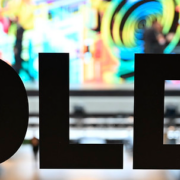- The Media Agency of the Future - 12. March 2020
- Revolución permanente – the next big thing facing us media planners - 21. February 2019
- My trend 2019: Addressing target audiences effectively - 20. December 2018
- Why socio-demographics has served its purpose - 28. September 2018
- Addressable TV, the new hyper-effective medium – but does it actually work? - 8. August 2018
- Addressable TV – next level - 20. December 2017
- Marketing is relationship development – good customer relationships thanks to good contents - 8. November 2017
Now that the internet is a fixture in practically every aspect of life, smartphones are almost ubiquitous and nearly every electronic device is connected via the “Internet of Things”, we are about to take the next big step: artificial intelligence, robotics and quantum computing. These technologies are not just changing society as a whole: they also affect our work as media planners.
In my view, there are three media or market-specific and technological developments which are having the greatest impact on our business at present:
1. The increasing power of the internet giants is drastically changing the advertising market. According to estimates by OMG and eMarketer, around three-quarters of German and more than half of US digital/online advertising investments now flows into the “walled gardens” of Google and Facebook. LUMA’s Digital Media Summit 2017 addressed the fact that, depending on the study, 50 to 60 percent of online shoppers in Germany and the USA search directly for the product of their choice on Amazon, without taking the “detour” of a search engine. The major platforms have understood exactly what the users want, meaning advertisers barely get a look in.
2. In the digitalisation service provision market, however, the cards are being re-dealt: management consultancies are increasingly moving into IT, marketing and commerce. Technology companies offer consulting services and agency networks are expanding their marketing expertise to include IT and commerce. It feels like new services and job profiles are springing up on a daily basis, heating up the “talent war”.
3. The model of the “average consumer” is redundant. Thanks to several contributing factors, our society is becoming increasingly heterogeneous. As a basis for planning in modern marketing, socio-demographics offer only minimal benefit in terms of differentiation and insights. There are now far more versatile and precise target group models and it is a case of implementing and improving these.
These technological trends impact on our society:
1. Things which were only possible using screens and keyboards in the past are now increasingly achievable using voice. According to Gartner analysis, by 2020 around 30 percent of web browsing sessions will be conducted without a screen. As well as the new brand presence, this represents a huge change, especially for traders – because shopping queries will produce only one result! On Amazon, the company suggests an Amazon Choice product in 59 percent of cases – posts sponsored by manufacturers only appear in response to 2.5 percent of all spoken requests as Gartner L2 points out. This means that the only successful marketers will be those who develop an integrated voice strategy and see it as part of a holistic brand experience.
2. While still a mystery to many, blockchain is among the technologies that we will encounter increasingly often in the next few years. Blockchain enables secure processing of transactions without central authority, even if the parties involved do not know or trust each other (yet). The benefits of blockchain are clear: transparency, participation, decentralisation and integrity. However, its complexity makes it hugely complicated to incorporate this technology into existing processes. Establishing blockchain solutions in the media business on a large scale will require the involvement of several participants with different market positions. For this reason, we are probably still a few years off using it on a day-to-day basis throughout the media business.
3. It seems to be the universal panacea: artificial intelligence (AI). Three areas are of particular interest in the field of marketing: AI helps to evaluate existing data and provide brand new insights into customers and target audiences using analysis and reports. At the content creation stage, it can use user data to personalise advertisements and it enables automation of several media planning processes. At Mediaplus, for example, with Brand Investor we have created a tool which can build an impact-based plan for all campaign objectives across 19 channels. The result is a media mix from the machine, which calculates the optimum suggestion out of millions of scenarios.
Despite the many innovations, these new technologies will never be able to replace media experts. They just pose new challenges and create tasks which we should approach with courage and energy, not fear and despair. Or, as Che Guevara said using the words of Trotsky, we are living in a “Revolución permanente”.
This page is available in DE





